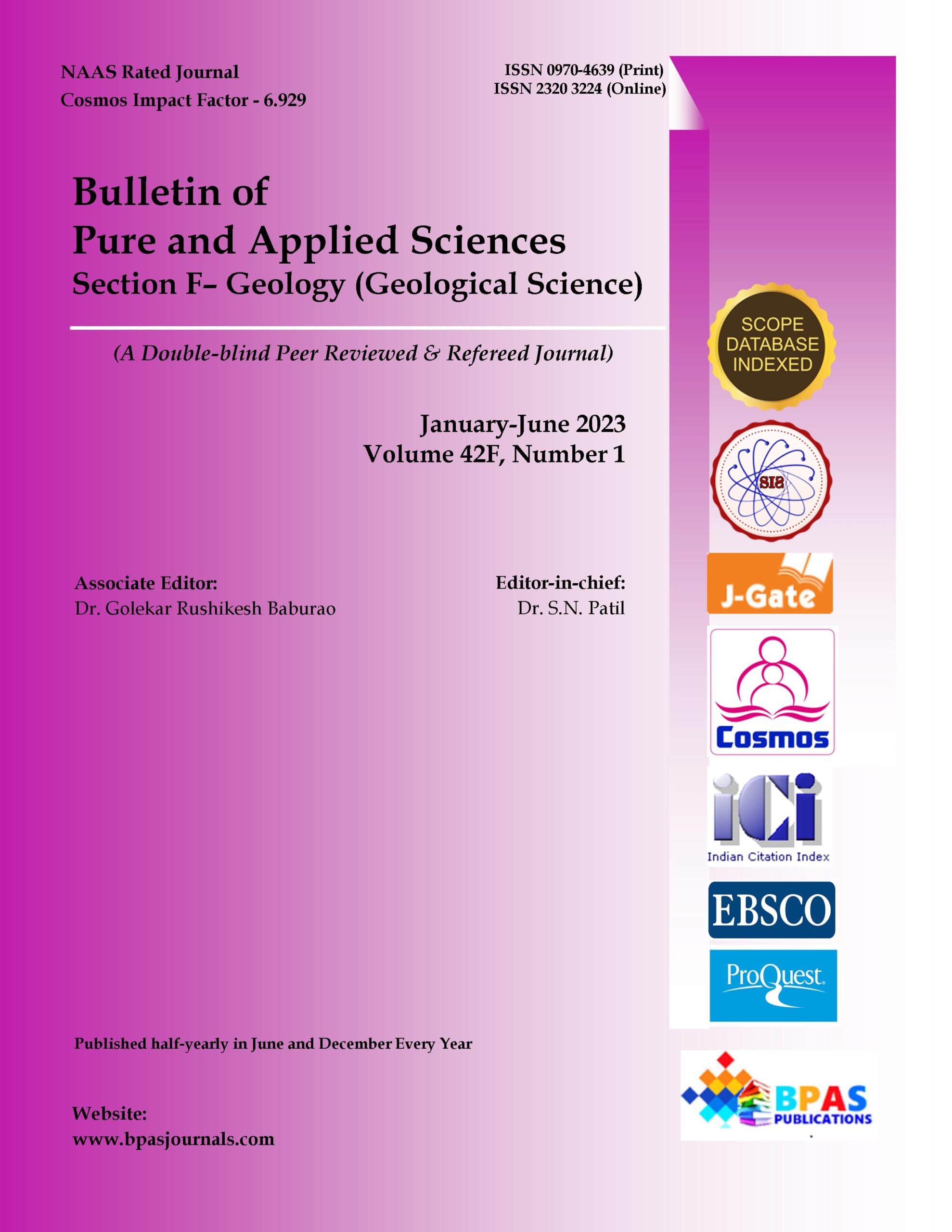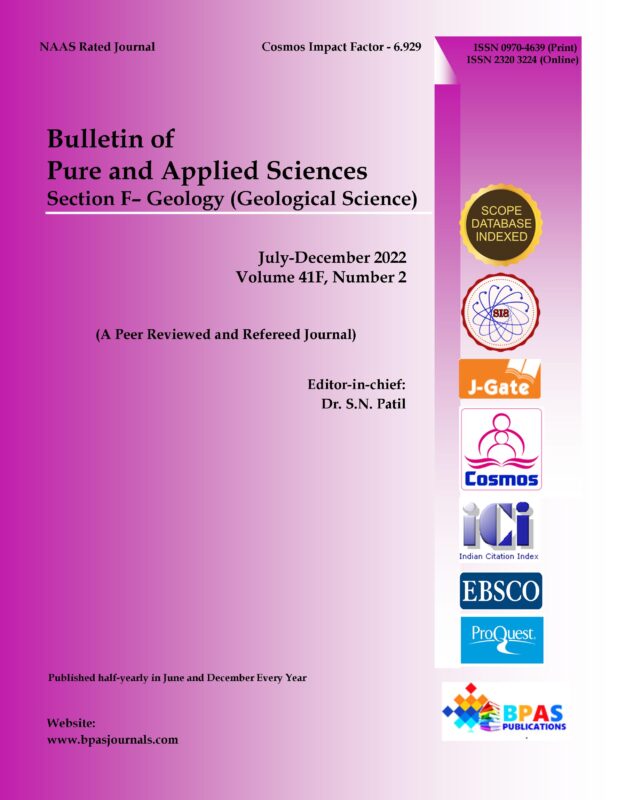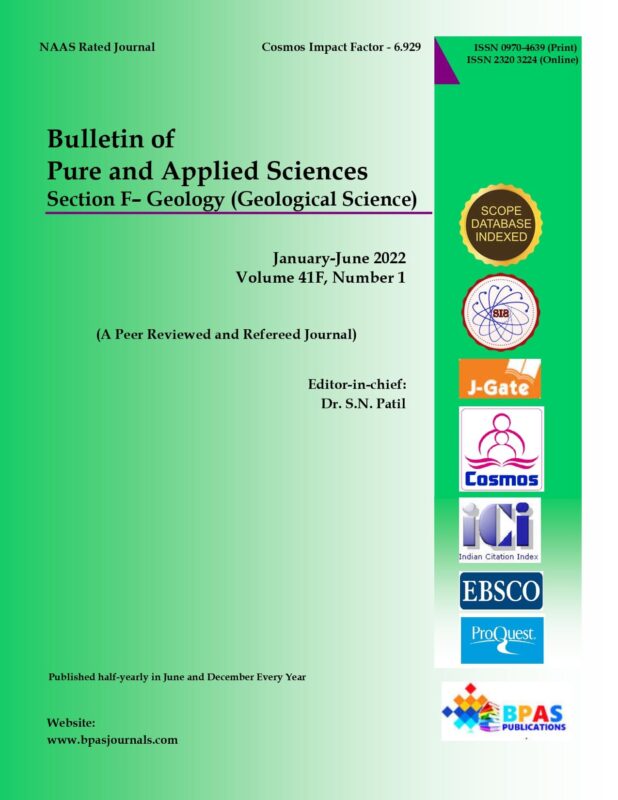Field-based Tectonic Assessment and Spatial Correlation with Land Use and Land Cover in the Goriganga River Basin
9.38$
1M. Nazish Khan, 2Shakhnoza Shavkatovna Khudoyarova*, 3Jamshid Juraev, and 4Rasuljon Mamajanov
| Bulletin of Pure and Applied Sciences.
Geology (Geological Science), Vol.42F, No.1, January-June 2023: P.32-45 |
| Original Article
DOI: 10.48165/bpas.2023.42F.1.4 |
Description
Field-based Tectonic Assessment and Spatial Correlation with Land Use and Land Cover in the Goriganga River Basin
1M. Nazish Khan, 2Shakhnoza Shavkatovna Khudoyarova*, 3Jamshid Juraev, and 4Rasuljon Mamajanov
| Author’s Affiliations:
1Professor in the center of Applied Remote sensing and GIS applications, Samarkand State University. E-mail: nazishgeo@gmail.com 2Researcher, Department of Hydrometeorology, Samarkand State University. E-mail: shakhnozakhudoyarova@gmail.com 3Researcher, Department of Geography and natural resourses, Samarkand State University. E-mail: jurayevjs198917@gmail.com 4Head of department, Department of Geography and natural resourses, Samarkand State University. E-mail: rasul.mamajanov@mail.ru
|
| *Corresponding Author: Shakhnoza Khudoyarova, Researcher, Department of Hydrometeorology, Samarkand State University.
E-mail: shakhnozakhudoyarova@gmail.com
|
| (Received on 17.10.2022, Revised on 26.12.2022, Approved on 30.01.2023, Accepted on 11.02.2023, Published on 15.06.2023)
How to cite this article: Khan M.N., Khudoyarova S.S., Juraev J., and Mamajanov R. (2023). Field-based Tectonic Assessment and Spatial Correlation with Land Use and Land Cover in the Goriganga River Basin. Bulletin of Pure and Applied Sciences- Geology, 42F(1), 32-45. |



